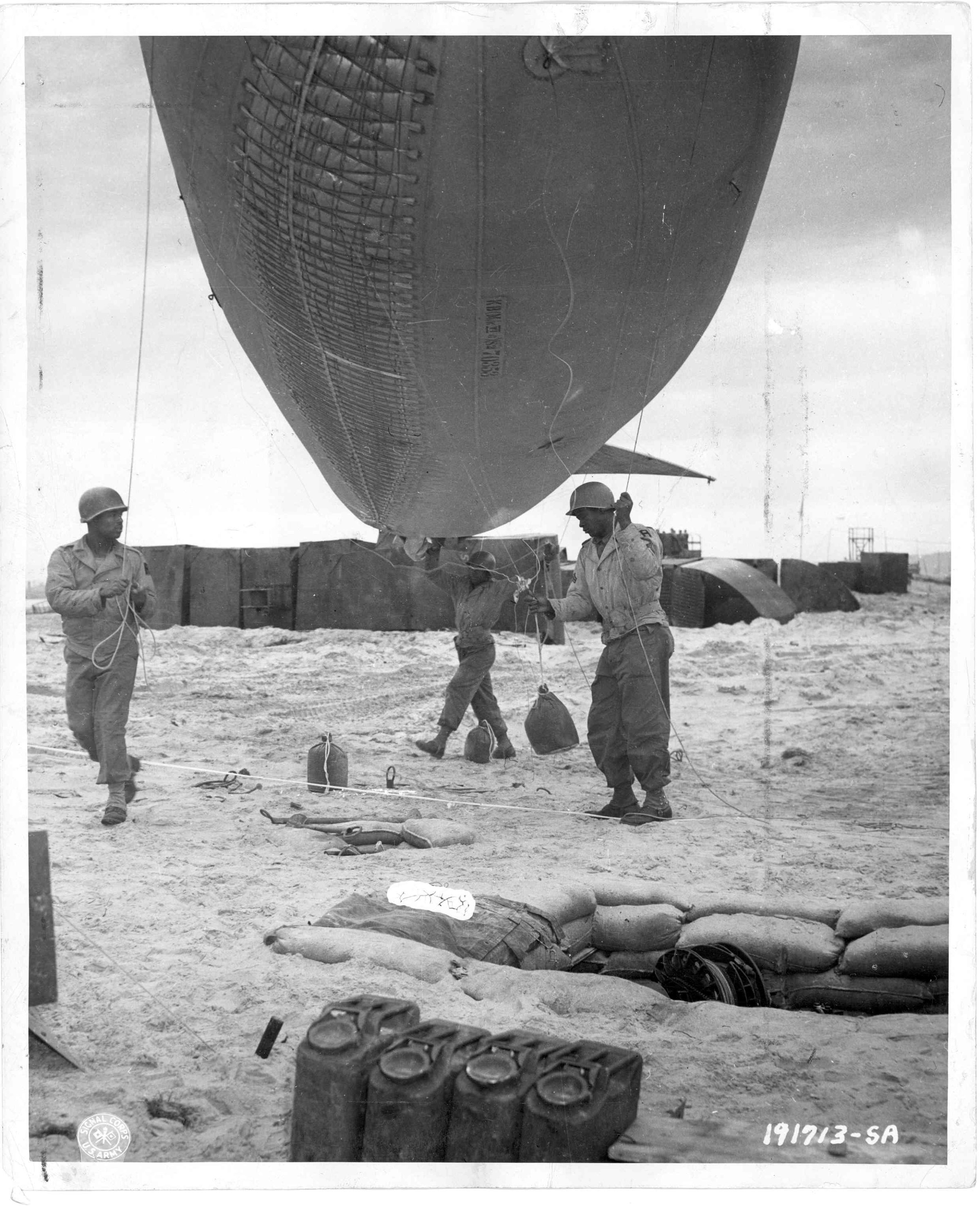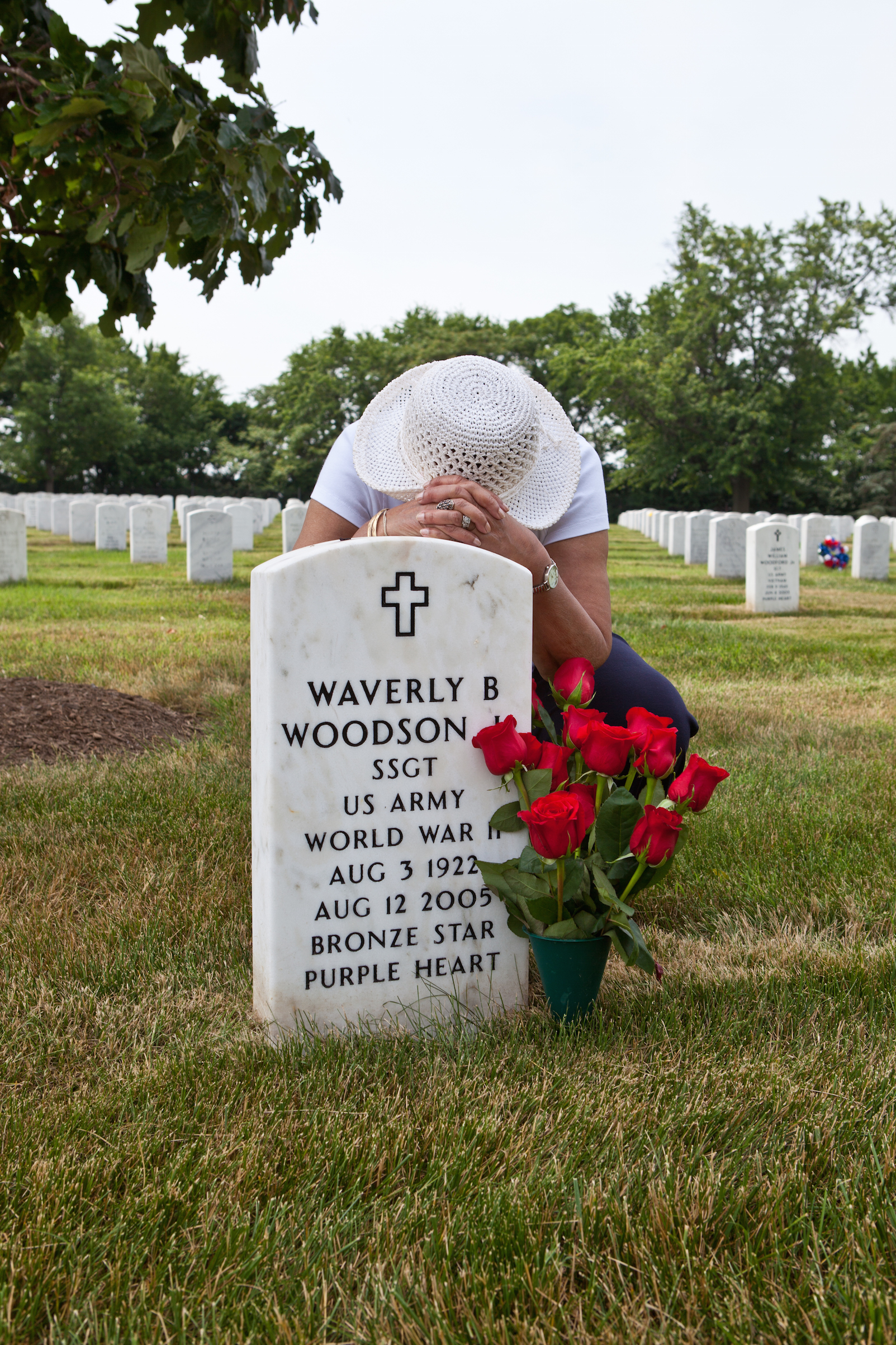
Seventy-five years after American troops landed in smoke, fire and chaos on the beaches of Normandy, France, a Maryland woman is fighting for recognition for her late husband, who is likely D-Day’s last unsung hero.
Corporal Waverly “Woody” Woodson Jr., was a 21-year-old medic from West Philadelphia when he splashed down in four feet of churning sea and waded toward Omaha Beach around 9 a.m. on the morning of June 6, 1944.
Woodson was wounded, hit by burning shrapnel that raked his landing craft and ripped open his buttocks and thigh. The soldier next to him was killed. A medic slapped dressings on Woodson’s wounds, and they, along with three other medics in their crew, crept up the beach while crouched behind a tank. They were the first African-Americans to set their boots on Omaha Beach.
For the next 30 hours, Woodson would survive German snipers and his own searing pain to save scores of lives. Decades later, Woodson would learn that he had been nominated for the Medal of Honor.
But he would not receive it, not even when President Bill Clinton belatedly awarded the nation’s highest award for valor in 1997 to seven black soldiers who’d been denied their D-Day decorations by an Army afflicted by institutional racism. “History has been made whole today,” Clinton said.
Woodson’s white marble gravestone at Arlington National Cemetery is inscribed with his final Army rank — staff sergeant — and his decorations, the Purple Heart and the Bronze Star, the fourth-highest award for bravery.

Waverly Woodson died in 2005 but his widow, Joann Woodson, who turned 90 on May 26, has made it her mission to see that her husband’s heroism is acknowledged. “I will fight for him as long as I live,” Woodson said from her home in Clarksburg, outside Washington, D.C.
Woodson was part of the 320th Barrage Balloon Battalion, the only African-American combat unit to participate in the D-Day landings. Their strange mission was to raise a curtain of hydrogen-filled balloons high over Omaha and Utah Beaches. The steel cable that anchored the balloons to the ground served as a terrifying obstacle for German dive-bombers. It could sheer off a wing. A cable strike also triggered a small bomb attached to just under the balloon that packed a potentially lethal punch for a hapless plane ensnared in the trap.
The 320th was all but written out of the story of D-Day. “There were no black soldiers on D-Day,” I was told, repeatedly, as I was researching my book about the 320th. The majority of books and all of the movies about D-Day omit them, although Saving Private Ryan shows their balloons. In fact, by nightfall on D-Day, nearly 2,000 African-American troops had landed on Omaha and Utah Beaches.
Get your history fix in one place: sign up for the weekly TIME History newsletter
Most of those soldiers were assigned to service and labor battalions, which were the jobs the Army disproportionately relegated to black soldiers. On Omaha Beach, the Hollywood director John Ford, who came ashore with a Coast Guard camera crew, watched from a point of safety as a black soldier ferried supplies from a ship, seemingly oblivious to the punishing machine-gun fire that strafed the sand around him. “I thought, ‘By God, if anybody deserves a medal that man does,’” Ford would later recall.
Years after the war, Gen. Omar Bradley, wartime commander of the First U.S. Army, observed that “every man who set foot on Omaha Beach that day was a hero.” For many D-Day veterans who performed extraordinary acts of bravery on that very long day, Bradley’s homage would have to do.
For Woodson’s family, that is not enough. They’ve started an online petition to win Woodson the accolades that even some in the Army believed he deserved. An Army news release from August 1944 — rare for a black soldier — lauded Woodson for treating more than 200 men.
And, more significantly, a faded hand-written note tucked in a folder at the Truman Presidential Library in Independence, Mo., reveals that an American general in Britain believed Woodson deserved better than the Distinguished Service Cross for which he had been recommended.
“Here is a Negro from Philadelphia who has been recommended for a suitable award,” the unsigned note says. “This is a big enough award that the President can give it personally, as he has in the case of some white boys.” The writer, who was almost certainly Philleo Nash, an official in the Office of War Information, addressed his message to “Jonathan,” who was presumably Jonathan Daniels, his frequent correspondent and an aide to President Franklin D. Roosevelt.
Maryland Sen. Chris Van Hollen Jr., has led the charge on Capitol Hill to persuade the Army to reconsider Woodson’s case. “Corporal Woodson was a hero who saved dozens, if not hundreds, of lives on Omaha Beach. His courage deserves to be honored with the Medal of Honor,” Van Hollen said in a statement.
So far, the Army has been unmoved. A trail of records, and new evidence such as a first-hand witness, is needed to right historical wrongs, and Woodson’s files are missing. This was the reason cited by the Army for denying Woodson the Medal of Honor back in 1997. Only a tiny percentage of records from World War II made it to the National Archives. And a fire in 1973 at the Army’s Personnel Records Center in St. Louis, Mo., destroyed the majority of World War II documents there.
In the summer of 1944, Woodson was a star. Newspapermen came to interview the modest pre-med student, and the local paper in Philly called him “No. 1 invasion hero.”
For the 50th anniversary of D-Day in 1994, the French government invited Woodson and two other vets on an all-expenses-paid trip to Normandy and presented Waverly with a palm-sized medal commemorating his service. “I was the only black man of the three,” Woodson said proudly at the time.
As the next big anniversary of D-Day nears, Joann Woodson is hoping the Army will make an exception to their records rule. “Seventy-five years is a long time to wait for justice,” she said.
Linda Hervieux is the author of Forgotten: The Untold Story of D-Day Black Heroes, At Home and At War (Harper).
Corrections: June 3 and 4, 2019
The original version of this story misstated the year during which the 50th anniversary of D-Day was commemorated. It was 1994, not 1944. It also contained a photograph incorrectly captioned as depicting a barrage balloon. It has been removed.
More Must-Reads from TIME
- Cybersecurity Experts Are Sounding the Alarm on DOGE
- Meet the 2025 Women of the Year
- The Harsh Truth About Disability Inclusion
- Why Do More Young Adults Have Cancer?
- Colman Domingo Leads With Radical Love
- How to Get Better at Doing Things Alone
- Michelle Zauner Stares Down the Darkness
Contact us at letters@time.com